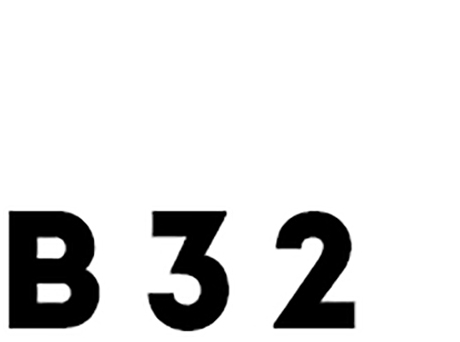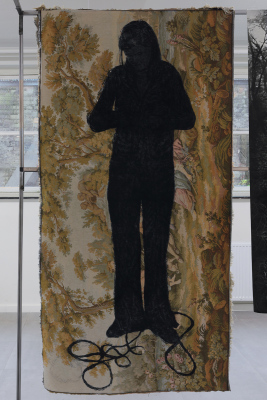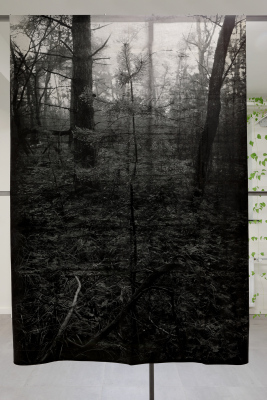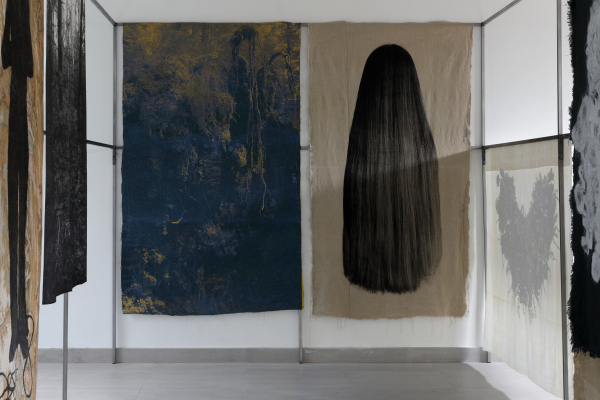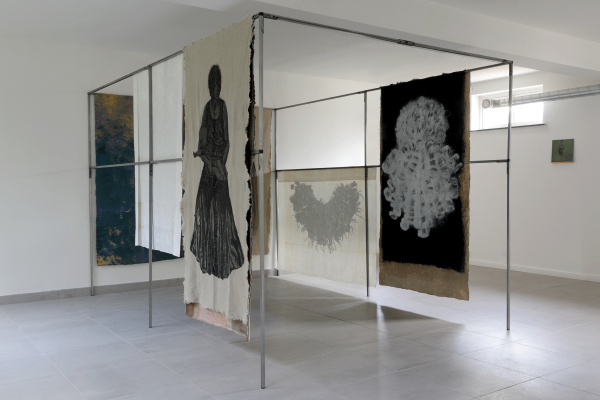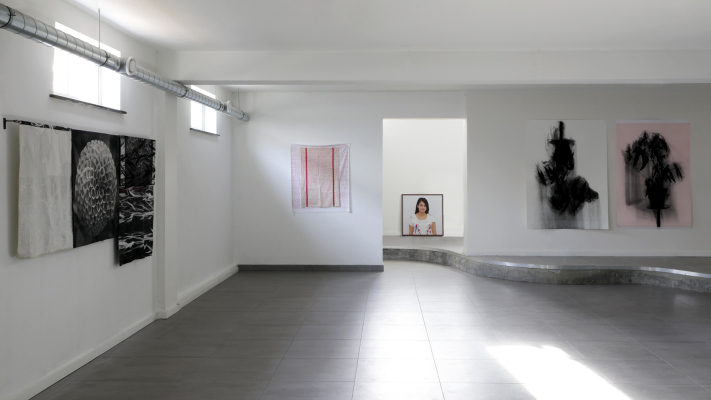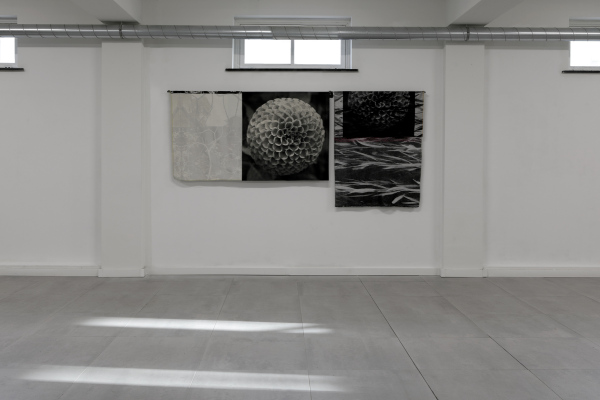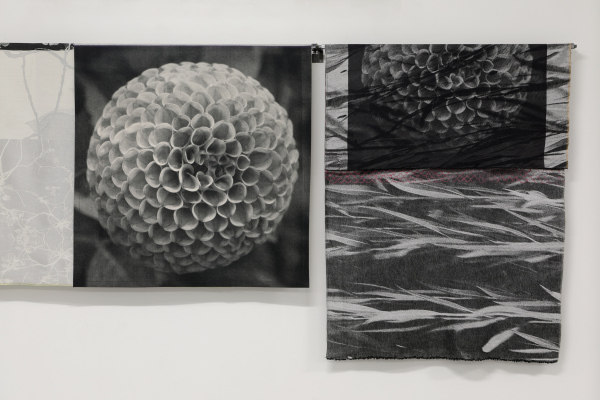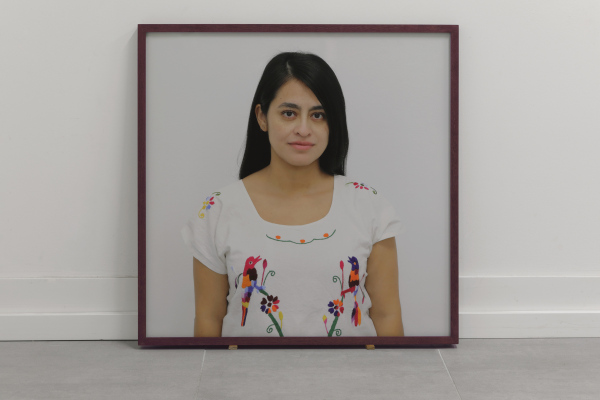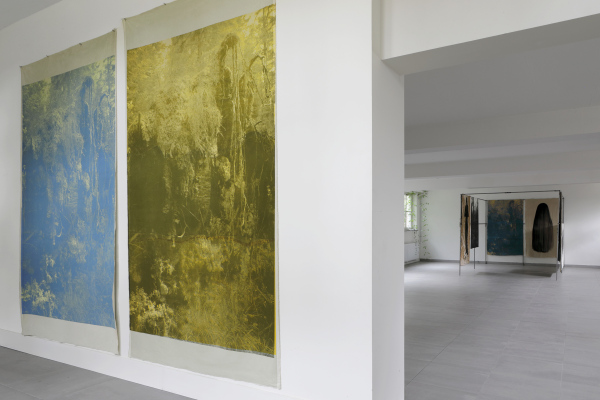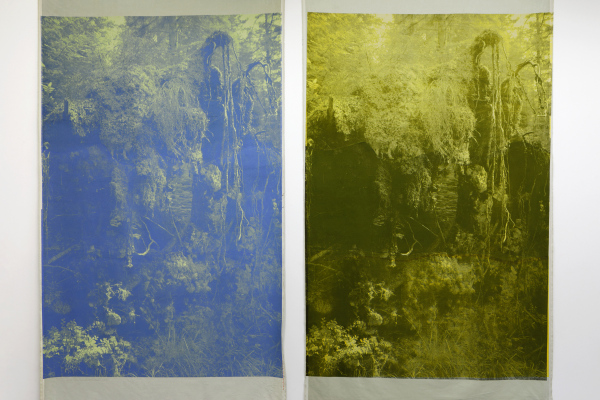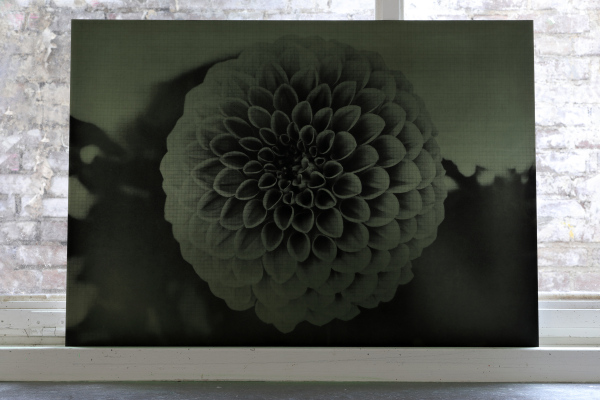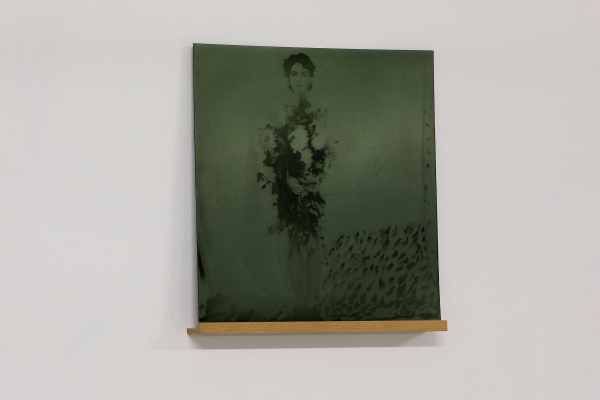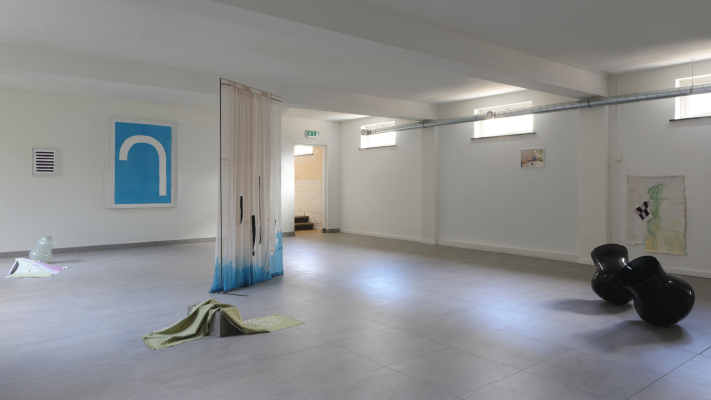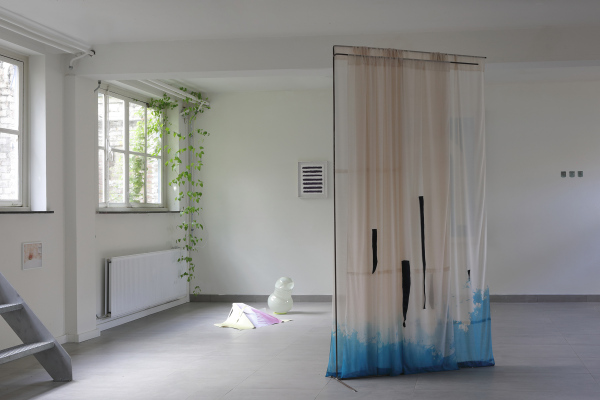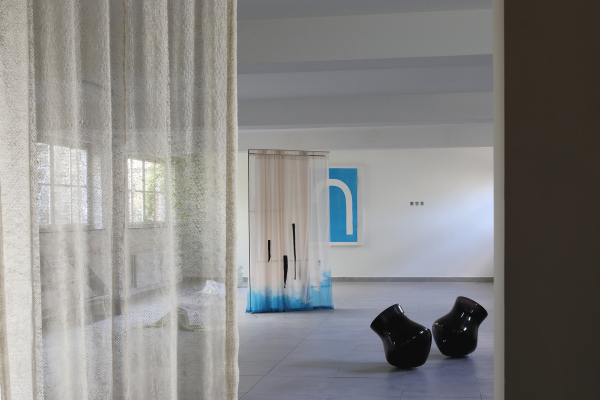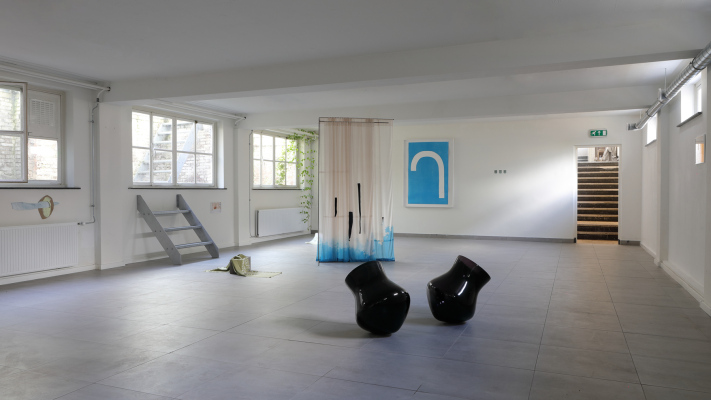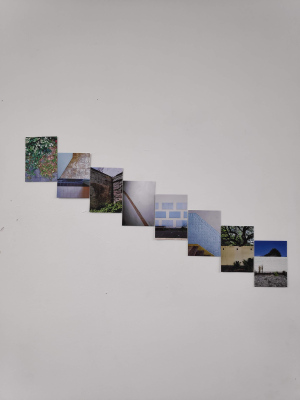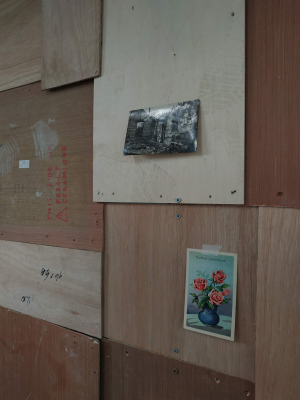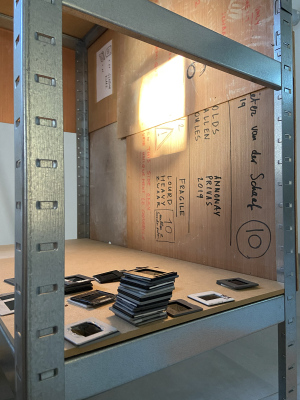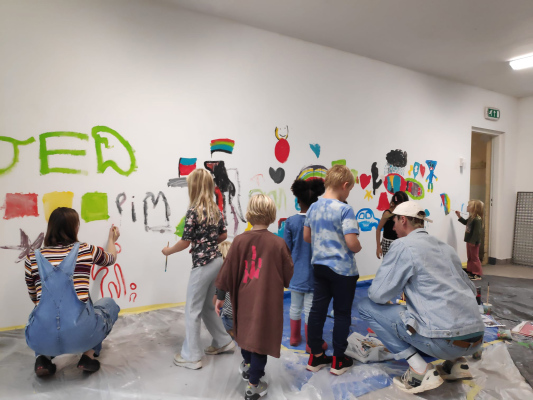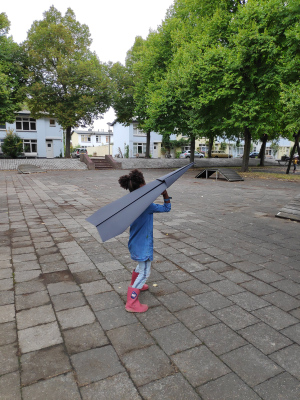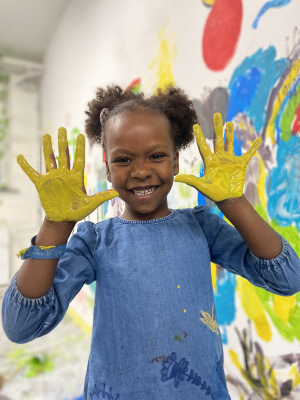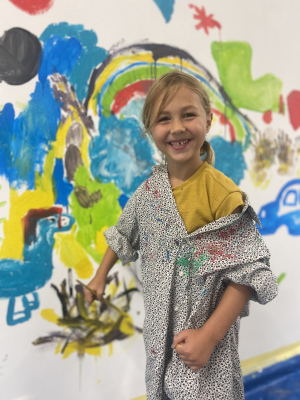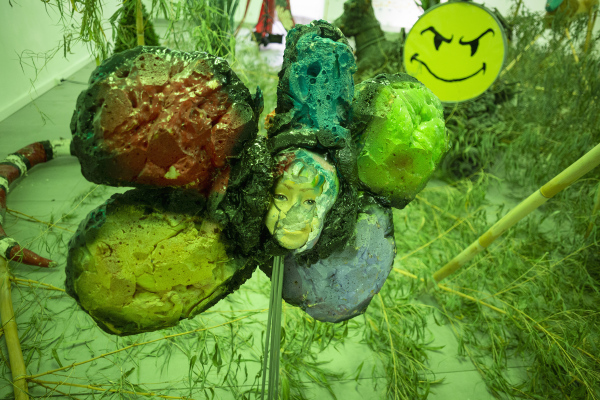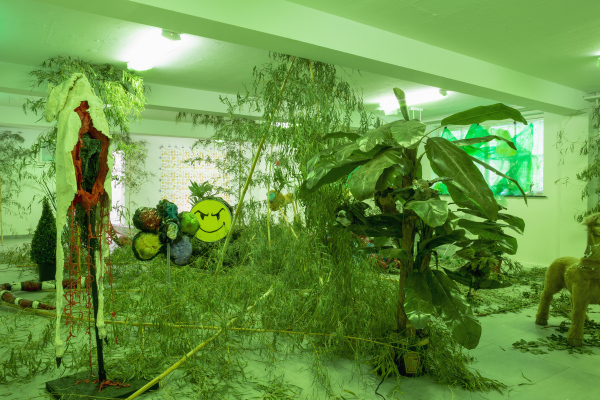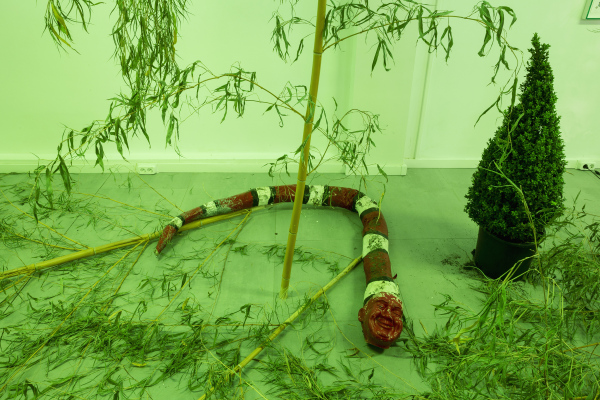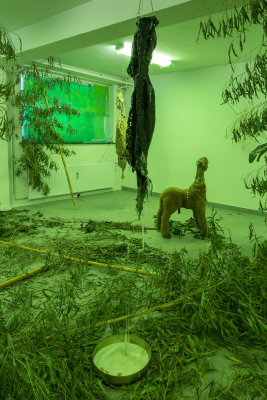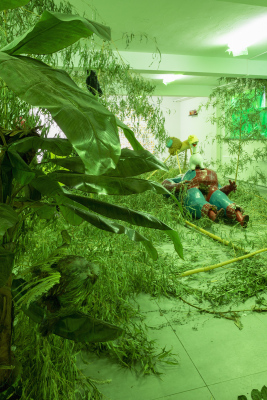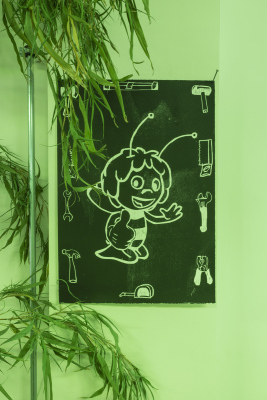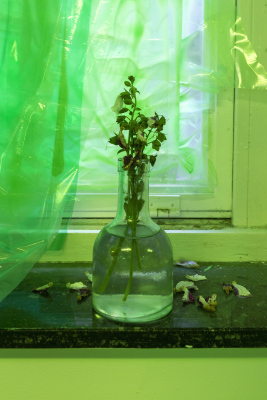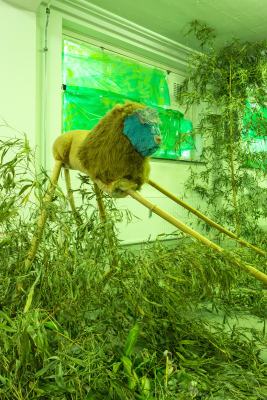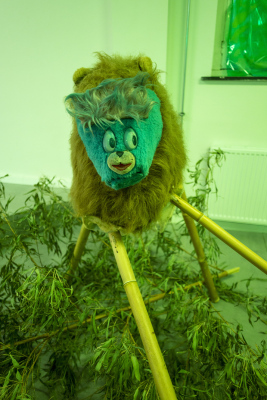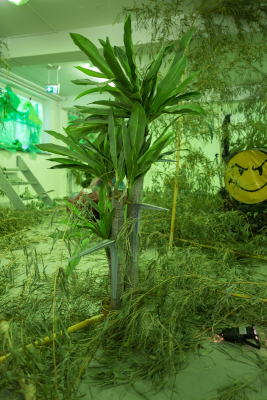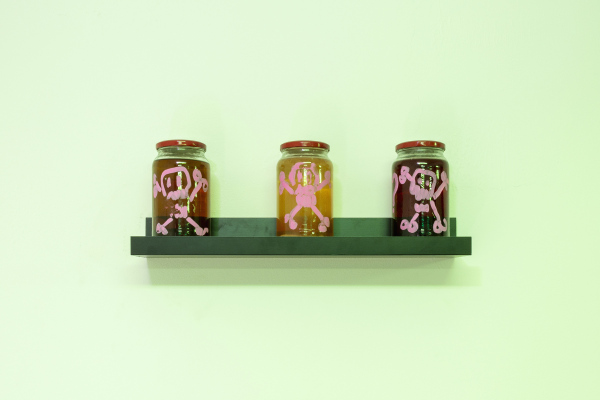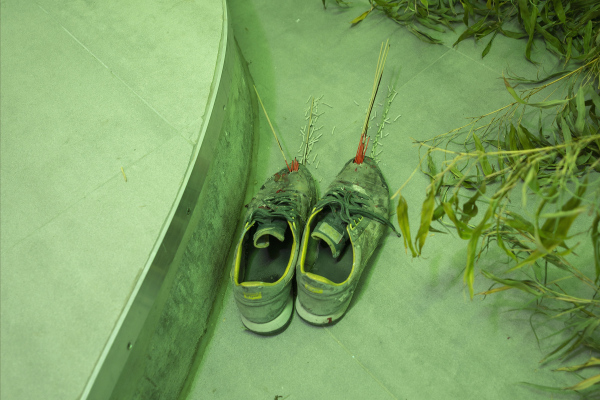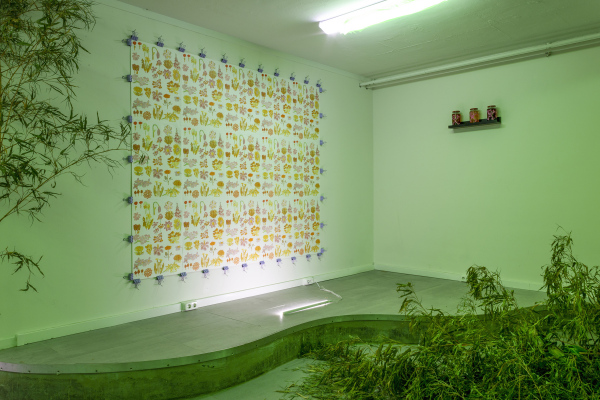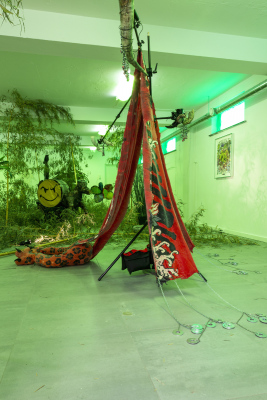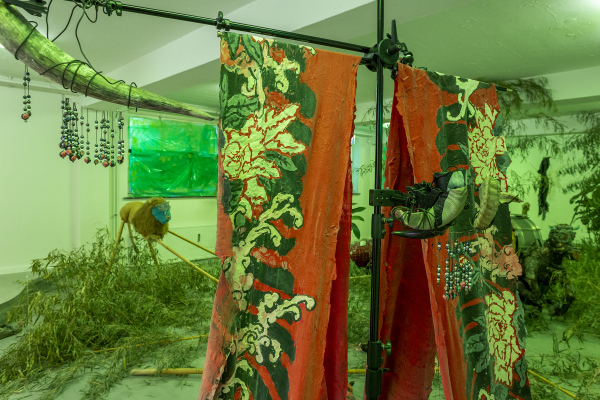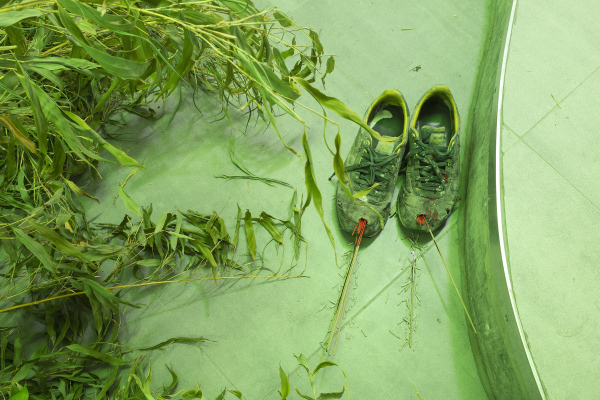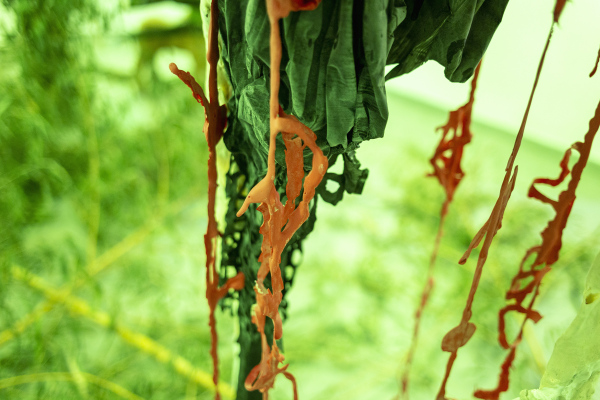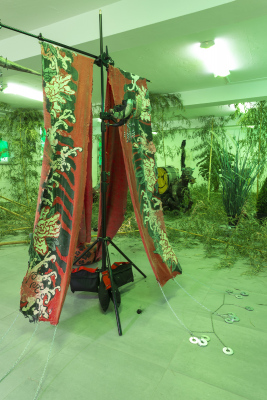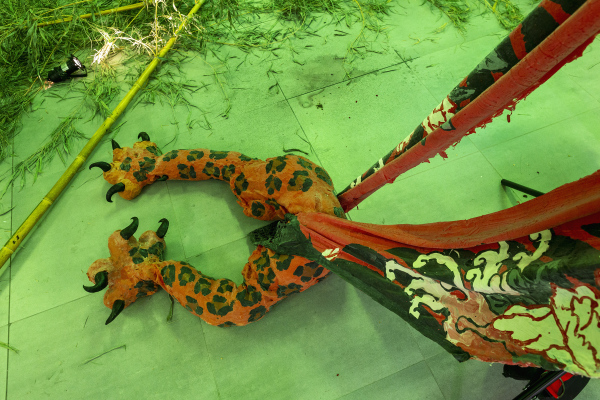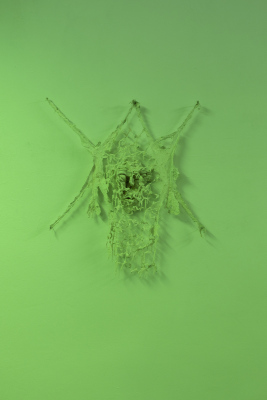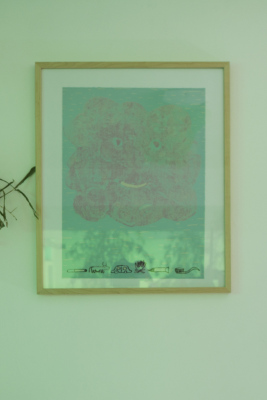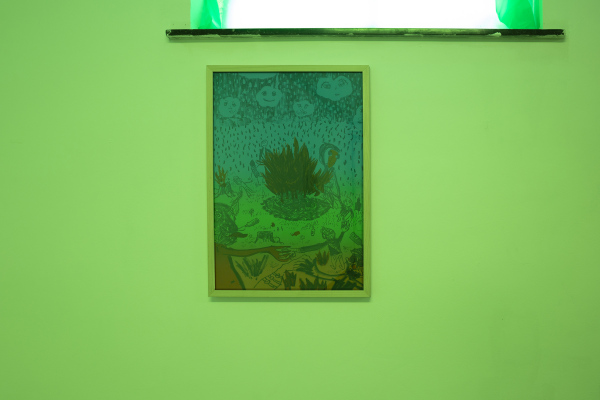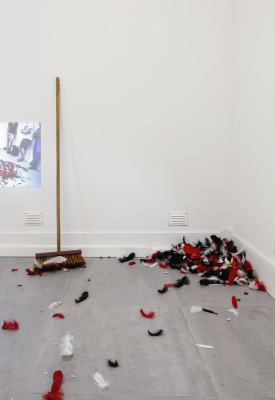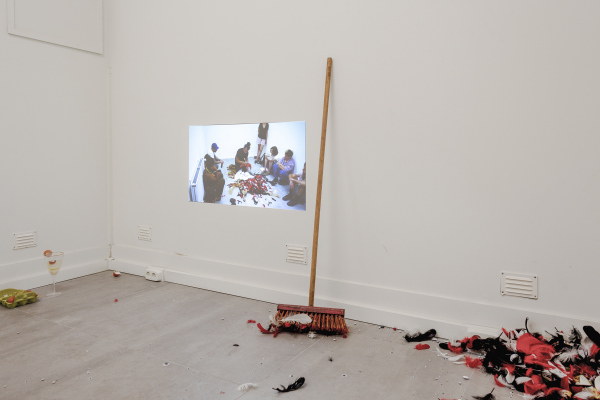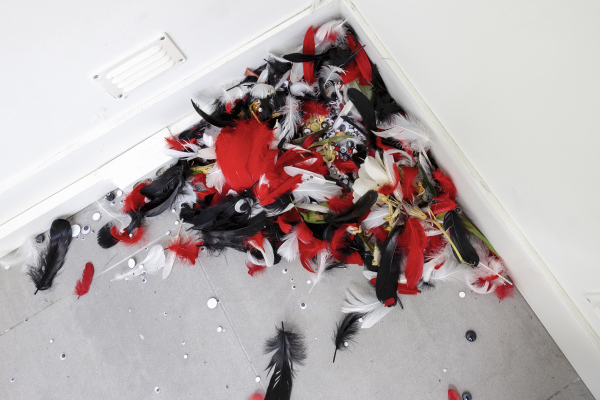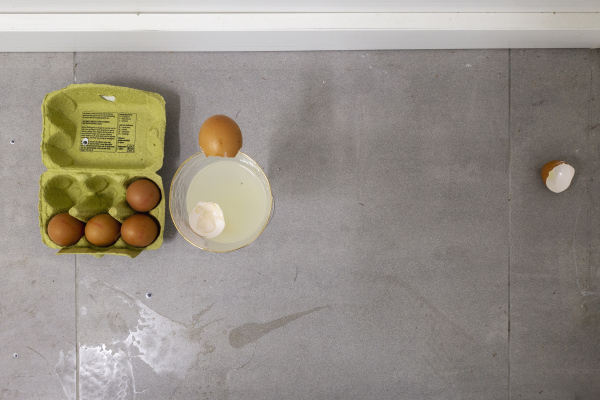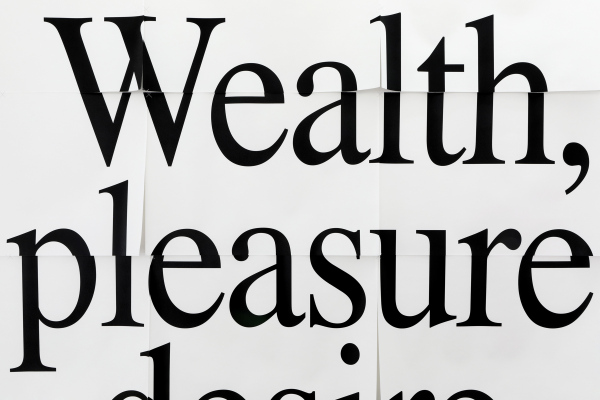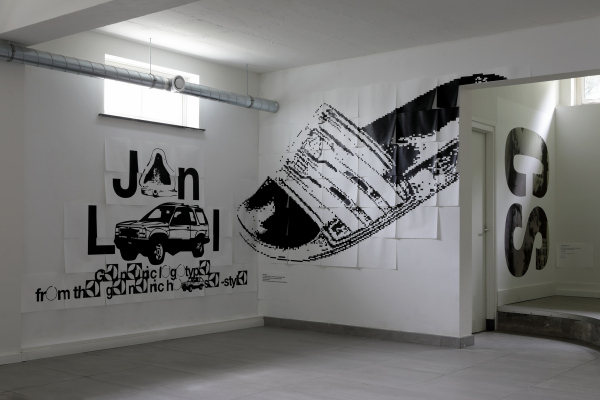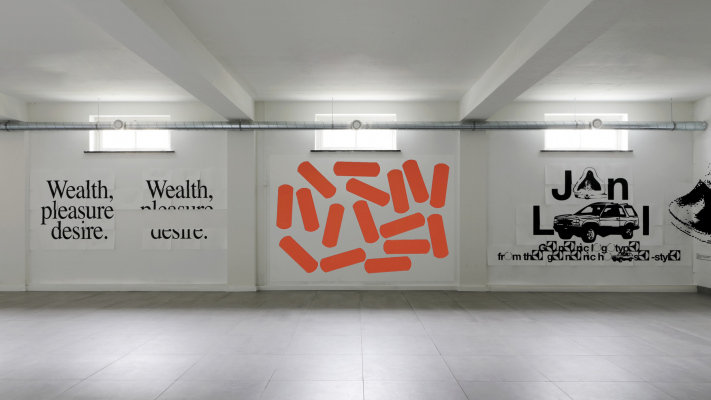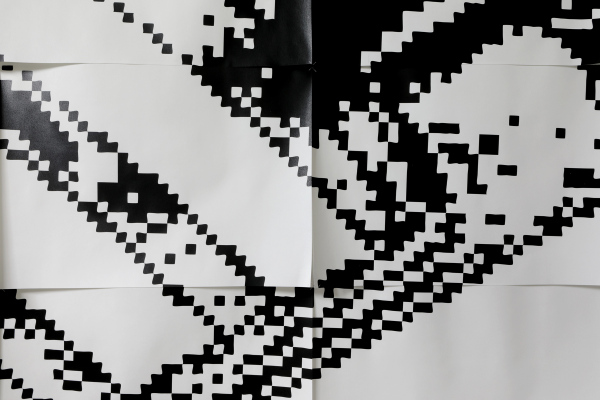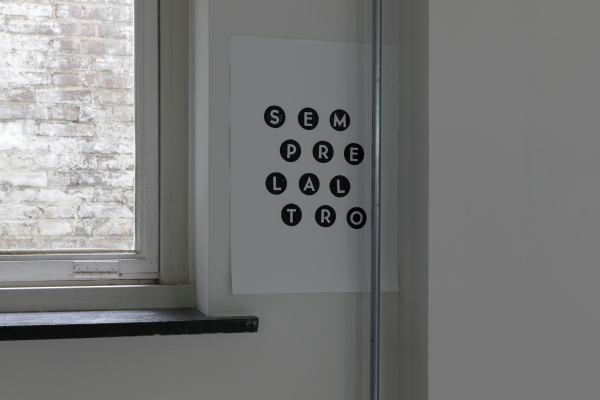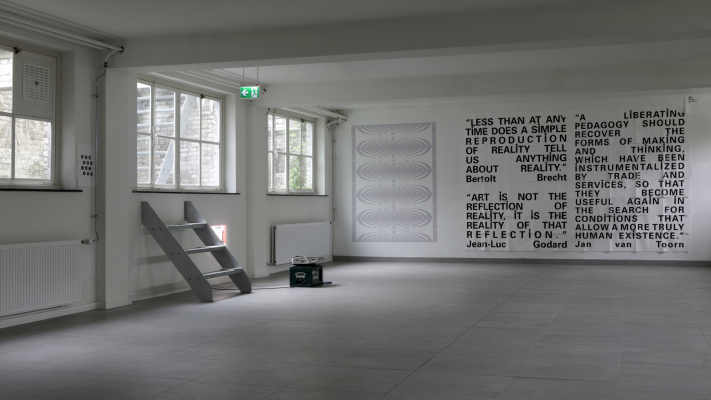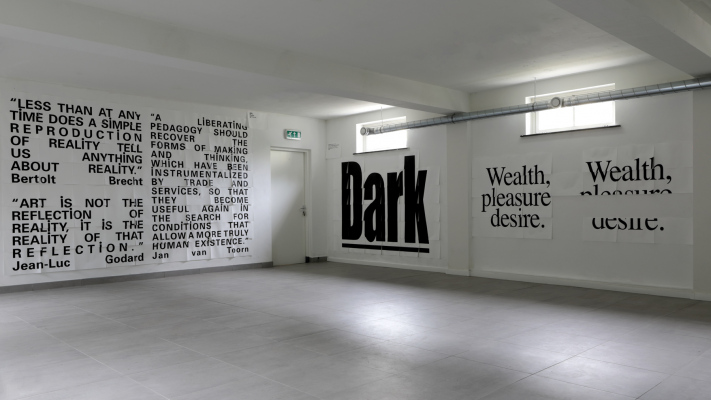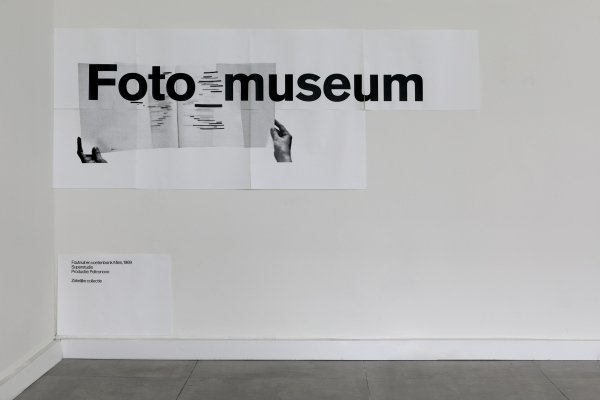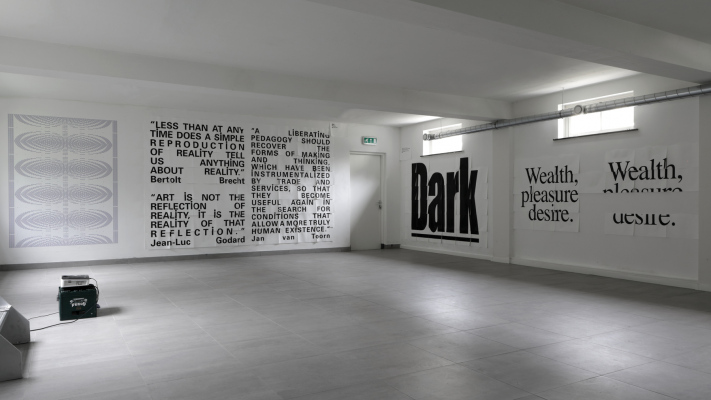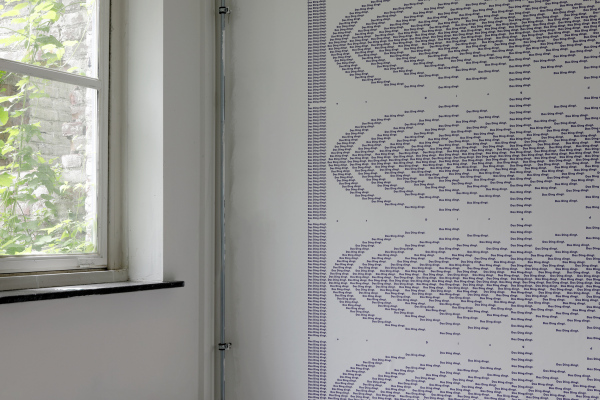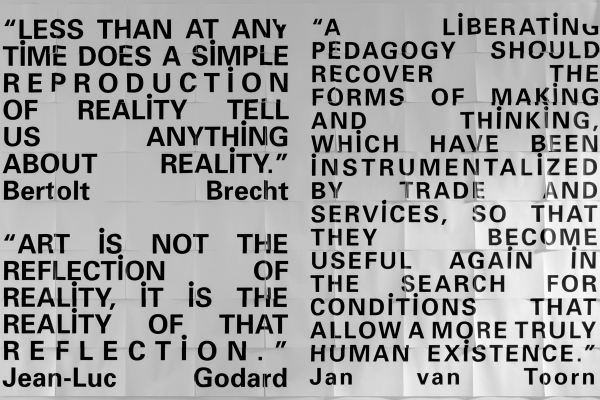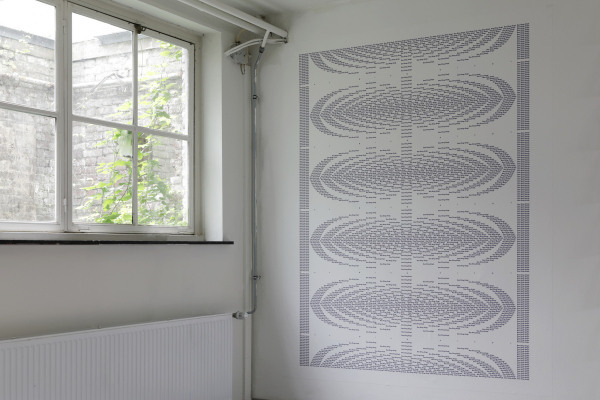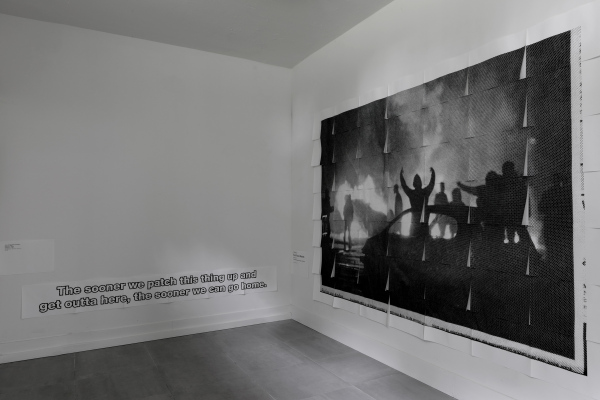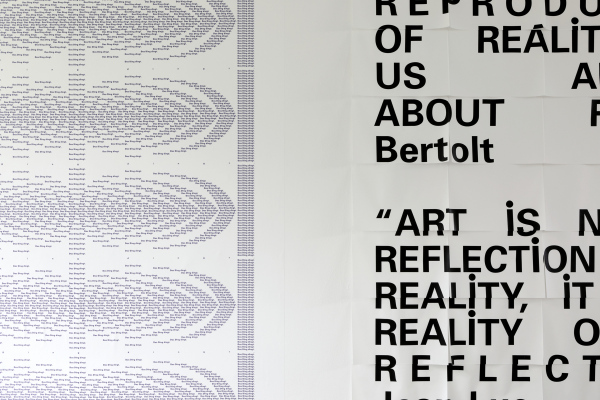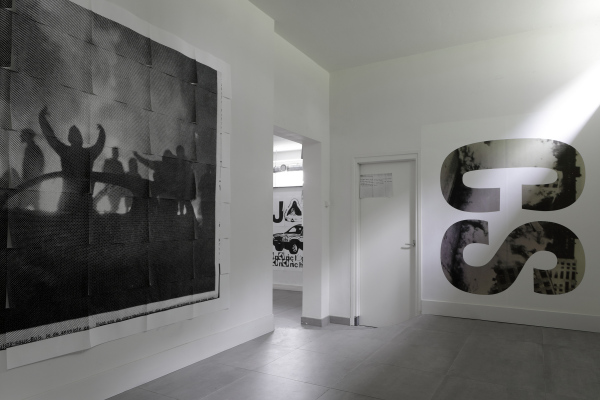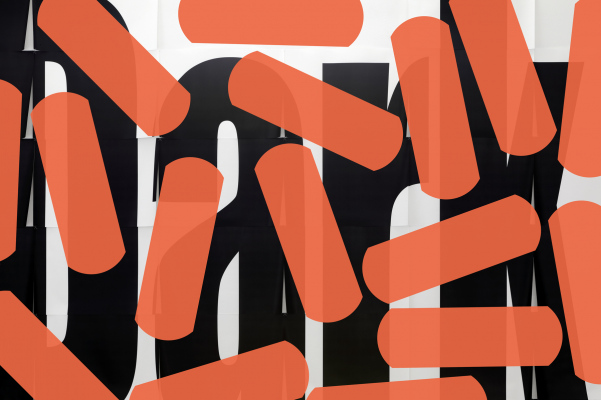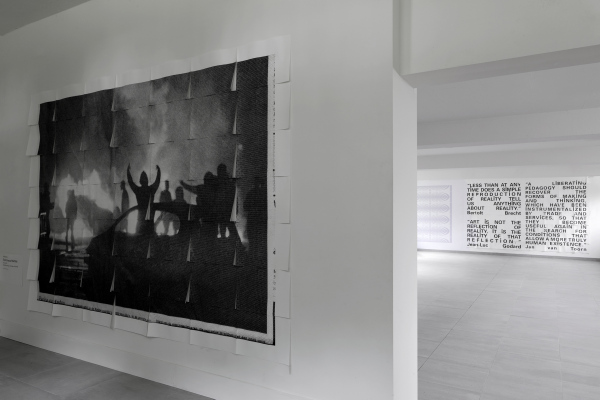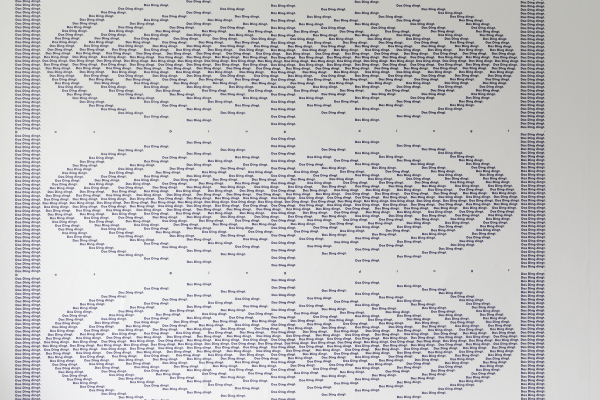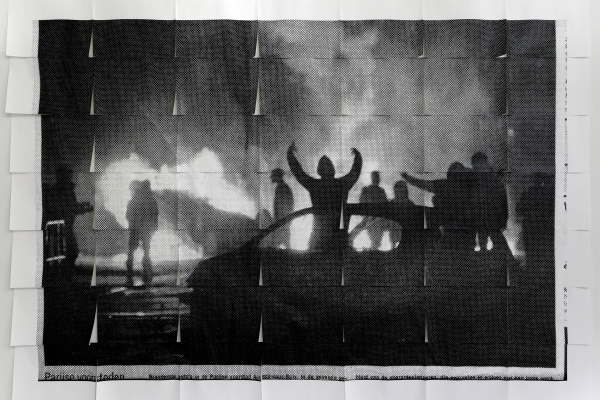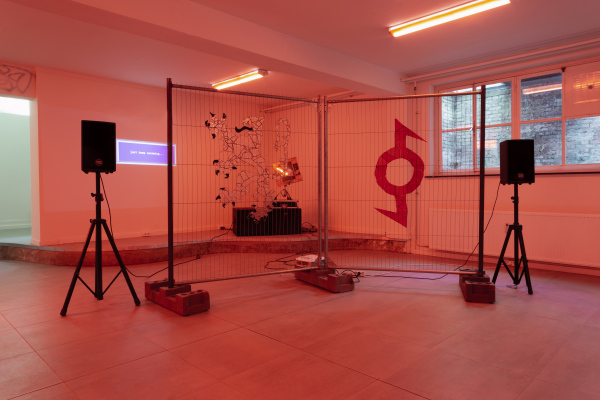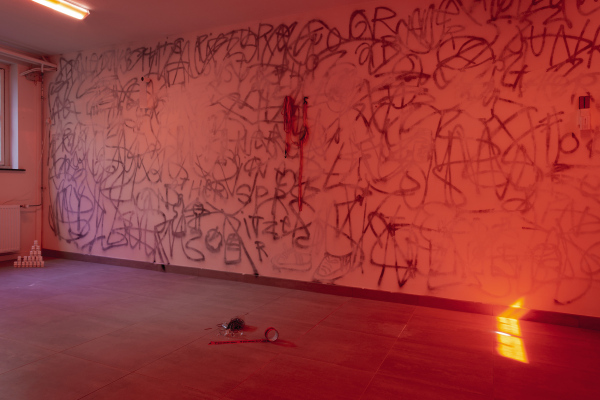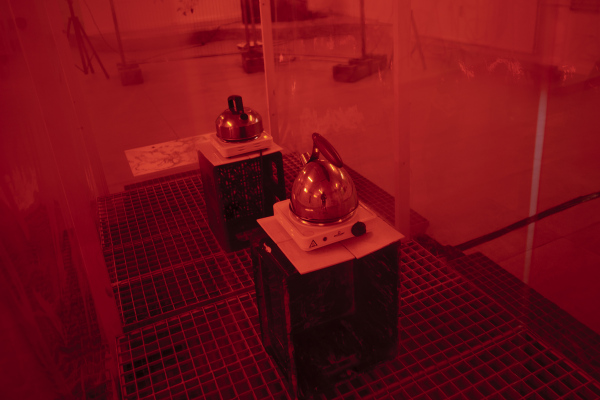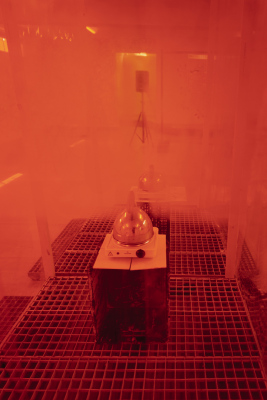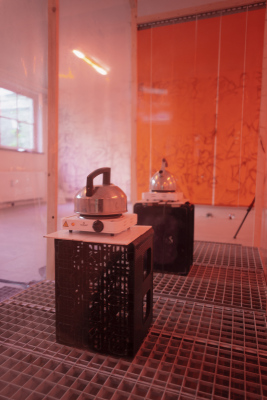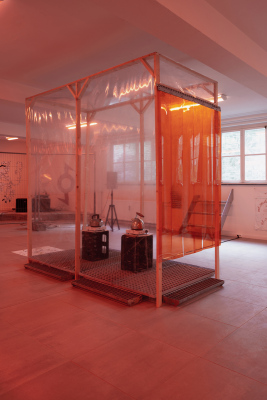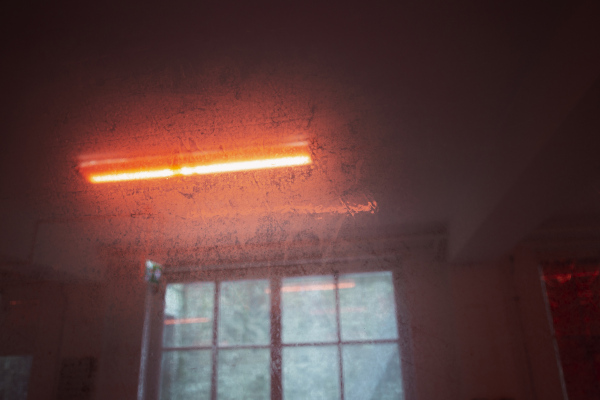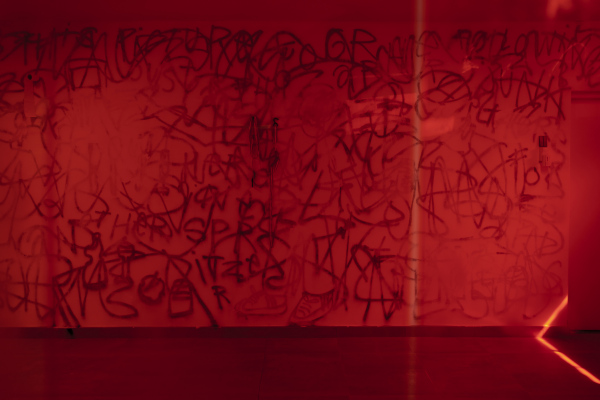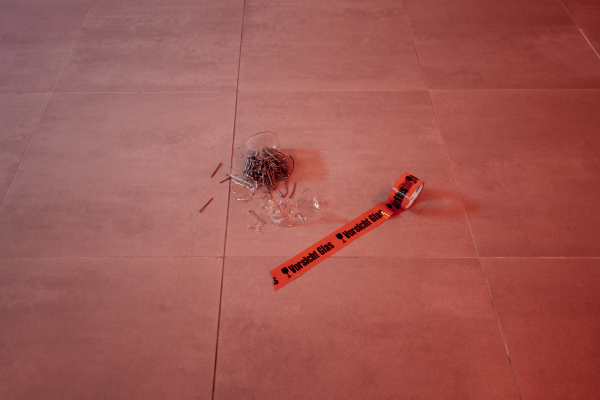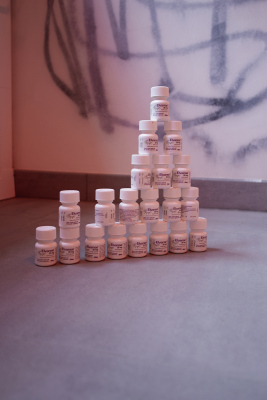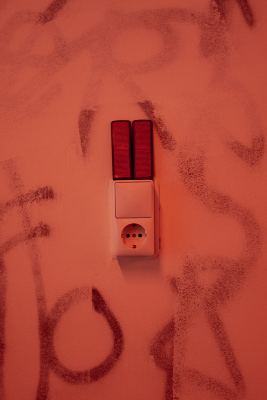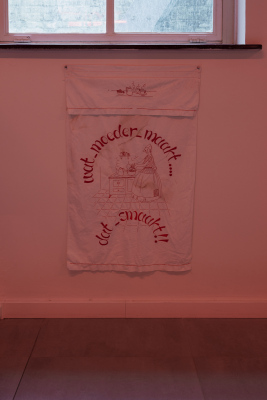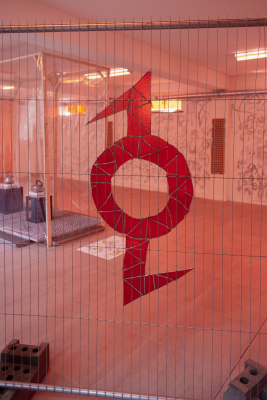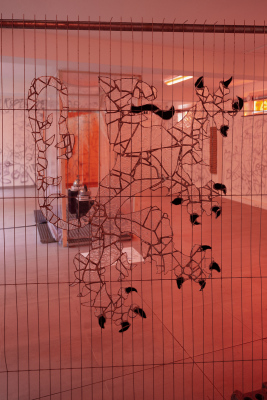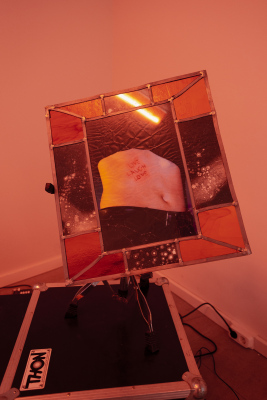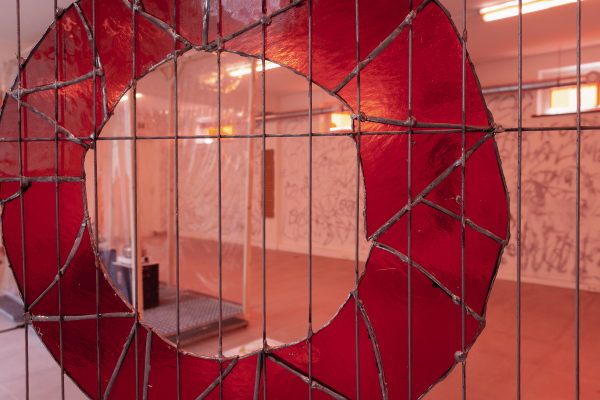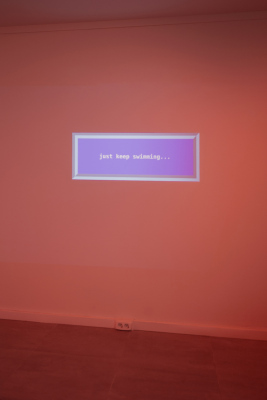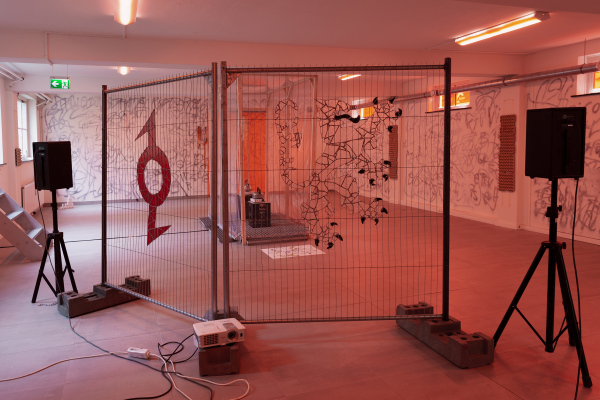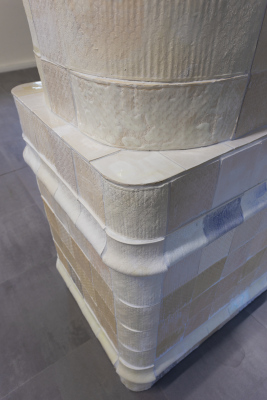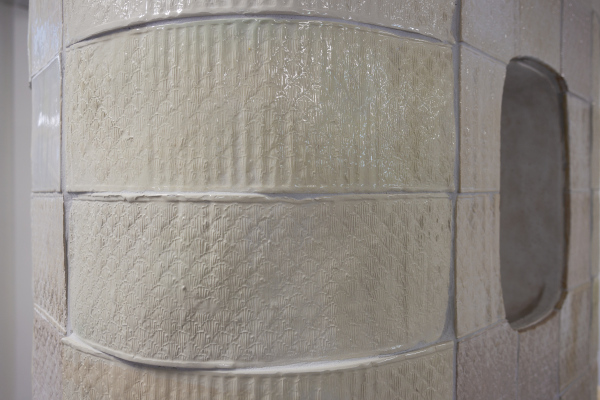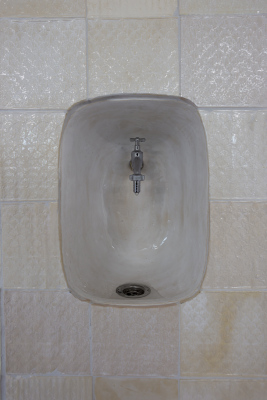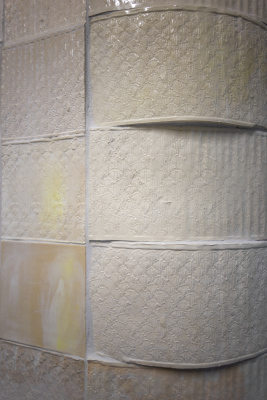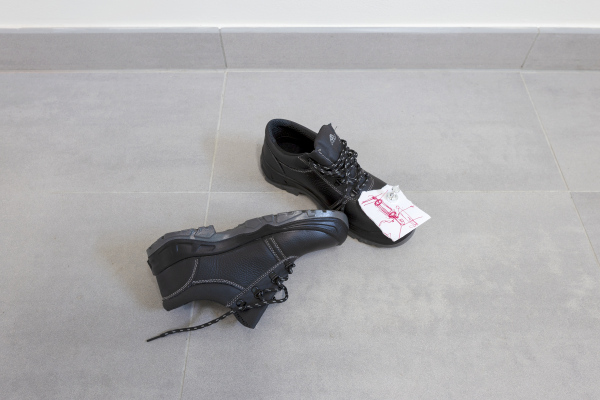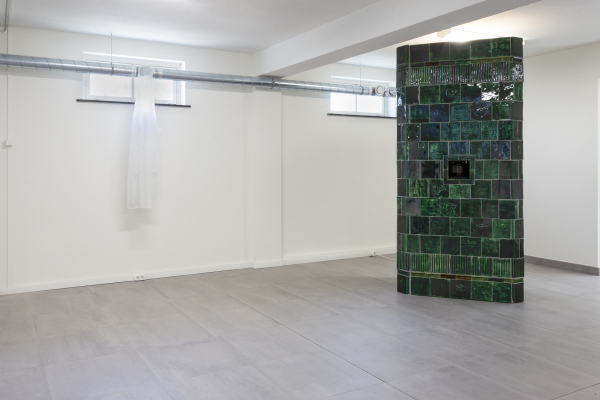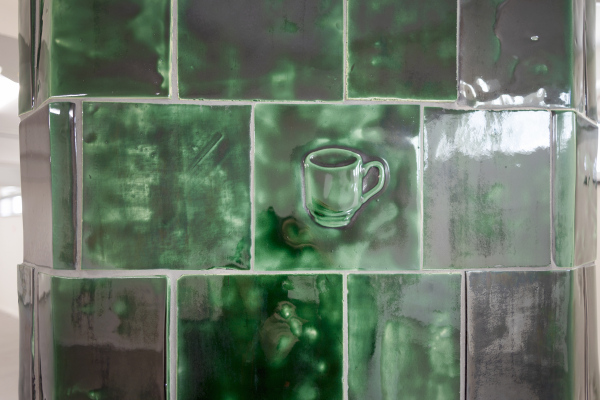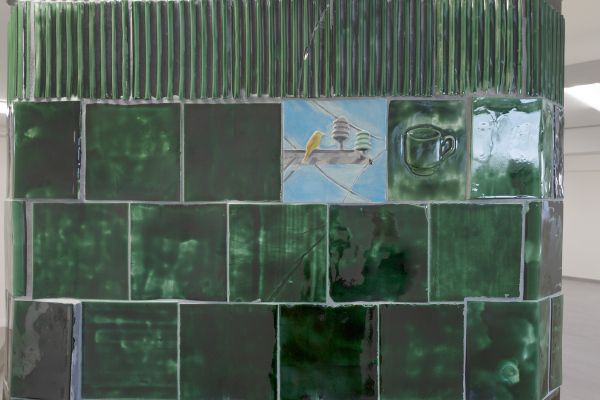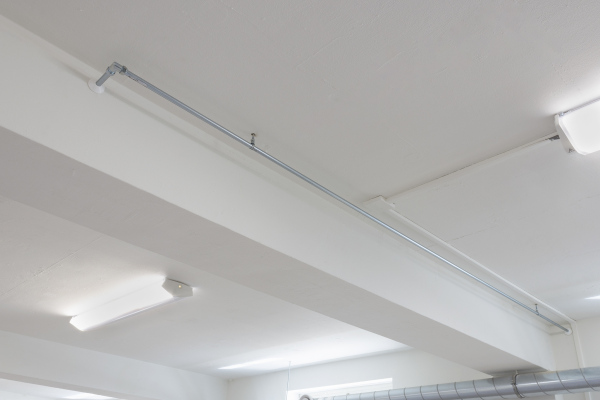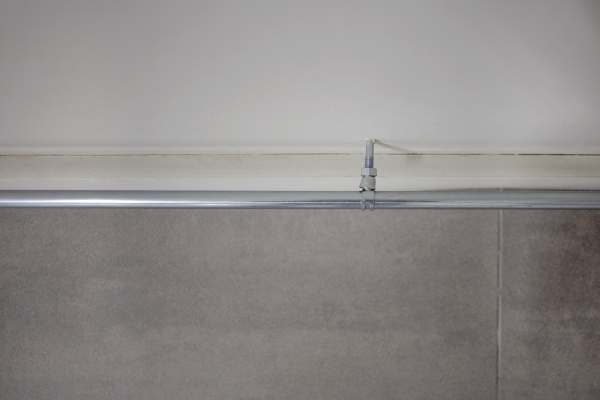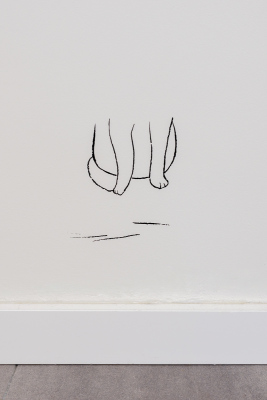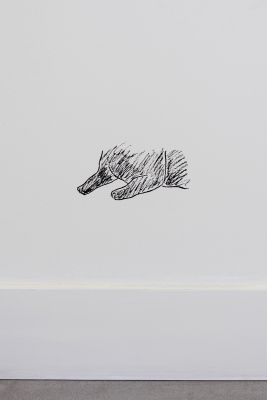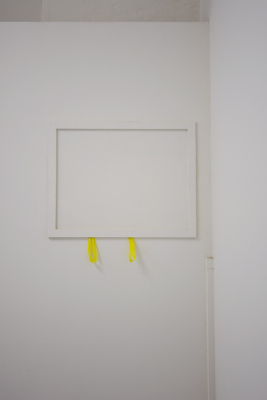-

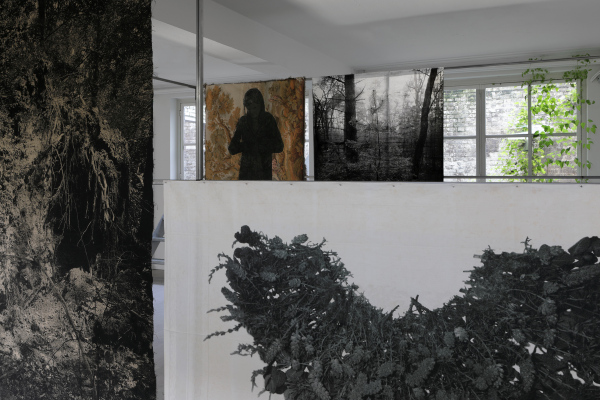


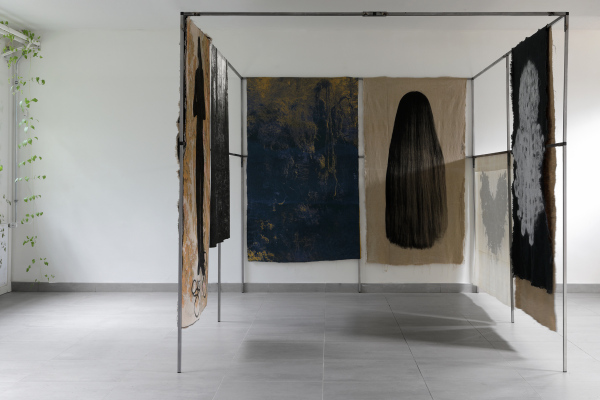
SWAP(s)#6: PERFECTLY WRONG
Margriet Thissen and Romy Finke
20.11–18.12.2022
.
Margriet Thissen en Romy Finke waren ooit samen deelnemer aan de Jan van Eyck Academie. Tegenwoordig staan ze als collega’s aan het roer van de zeefdruk- en de fotografiewerkplaats in diezelfde academie. Voor deze tentoonstelling maken ze een diepe duik in het verleden en wandelen ze door elkaars archieven. Ze constateren dat de tekeningen van destijds zijn vertaald naar een sporadische weefsel om uiteindelijk een vaste plek te krijgen op grote zeefdrukken op geweven stof. Althans in Margriet Thissen’s geval. Omgekeerd maken de portretten van Romy Finke een zachte omweg via foto naar gezeefdrukte weefsels en landschappen met een sporadische tekening. Beiden verdiepen ze zich in de overeenkomstige wereld van personen en landschappen. Een wereld van vertraging. Grote doeken, bijzondere werelden. Je zou er zo maar kunnen verdwalen.
==================================================================
Your alarm clock is blaring. It's 7am. Your alarm clock is blaring classical music. Don't get up. Don't open your eyes. Imagine you are elsewhere. Imagine you are not in your bed. Imagine you're back at school. Let the music play out and imagine you're back at your school - highschool, art school, the Jan van Eyck Academie, wherever, but a building you're intimately familiar with. And navigate your school building. Walk down the corridors. Enter class rooms, bathrooms, the canteen too. The building, though, isn't peopled with bodies.
The building in your head isn't peopled with bodies of faculty staff members or fellow students. The building is colonized by paper. Stacks of paper. Piles and piles of paper. The smell of paper. Sheets and sheets of paper - blank paper. Blank paper. Blank paper in different colors, in different textures, in different sizes, of different weights, but all paper is blank. Scrap paper. Pristine paper. Manila paper. Is this an archive? Is this a potential archive?
.
Now blink. And return to this building in your head. The paper is no longer blank. The horror vacui has subsided. (The horror! The horror!) As far as your eyes can reach you see photographs, silkscreen prints, photo etchings and etcetera. Portraits of women. Close-ups of flowers. Topsy-turvy plants. Vast landscapes in gold and blue. Charcoaled faces, figures and lines. Is this an archive? If so, how to get lost? Is the Dewey Decimal System of any assistance? Or, perhaps custodians in the disguise of Borgesian librarians can help out pointing at all the wrong directions.
.
Your alarm stops. The blaring music comes to a halt. You leave the building in your head to make coffee in your kitchen. What's an archive? How to archive? How to archive for whom? How to archive for whose posterity? How to achieve an archive to give room to temporary permanence? Archives. Archives come in many forms and shapes, bits and bytes and printed matter. Archives can be liquid. Archives can leak. 1983 can leak into 2022 through generous translation and mistranslation. A 1983 translated into 2022 will be different from one translated into 2046. Leakage as a rematerialization of time, bygone time, untimely time, delayed time, swapped time, perfectly wrongly timed time to wander through and experience multitudes of unexpected and beautiful tongues...
==================================================================
Margriet Thissen (margrietthissen.com) is an Eindhoven-based artist. From 1985 to 1987 she was a residency artist at the Jan van Eyck Academie where she now co-runs the printing and publishing lab.
.
Romy Finke (romyfinke.nl) is a Heerlen-based artist. From 1986 to 1988 she was a residency artist at the Jan van Eyck Academie where she now runs the photography and audiovisual lab.
.
Text by Roy Voragen (poet and curator)
-
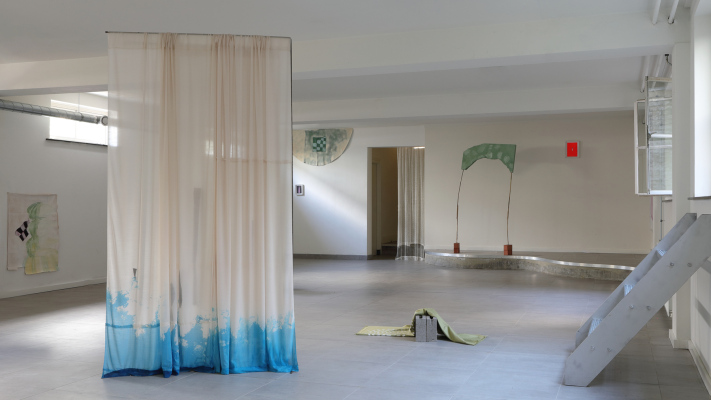
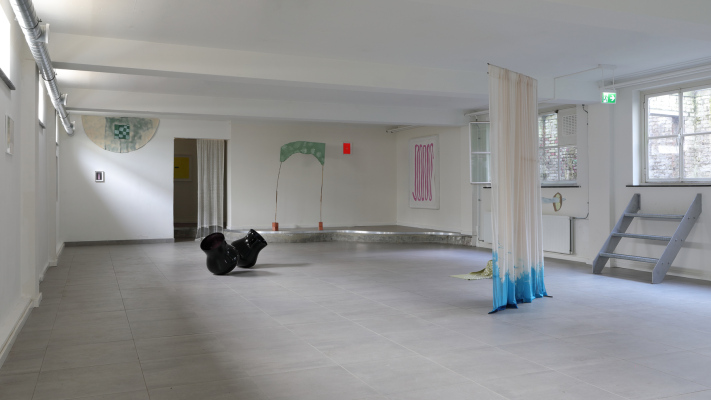
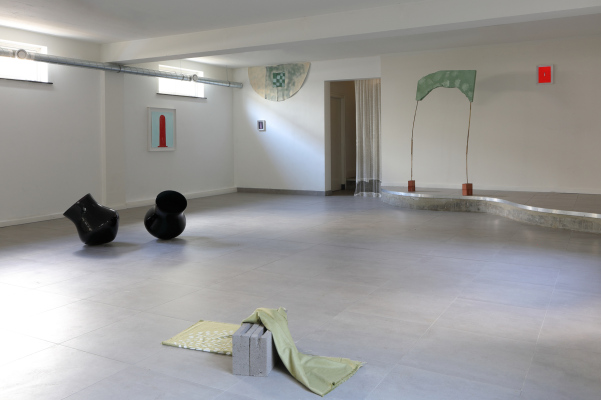

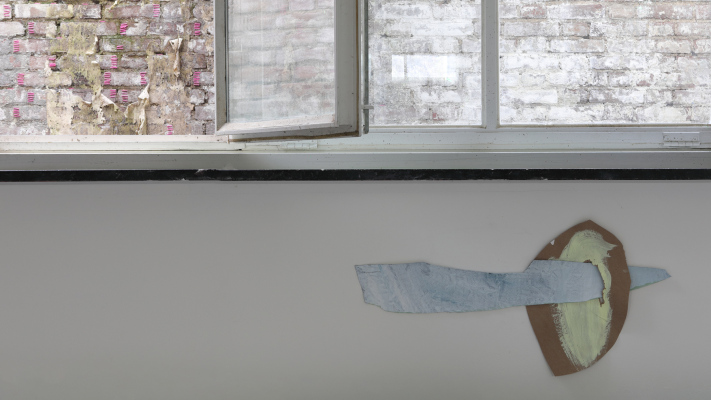
SWAP(s)#5: HINDSIGHT
Ilse van Roy, Famke Storms, Fee Veraghtert, Louisa Vergozisi
09.10–06.11.2022
.
‘Above all, let us feel the work. Let it be visual, to be experienced, and not just to be understood.’
.
Hindsight means collecting. The collecting and collections of four artists from the Netherlands and Belgium, whose work across different media shares a finesse, an attention to detail and an importance of the final gestures. The collecting of memories, ideas, forms, and shapes to then pour these into scenographies, into certain spatial constellations. The collecting of own archives and bringing these together in this exhibition, that can be seen more as a collaboration.
.
Hindsight means time. The time for reflecting on something that has happened. The time for rethinking things in the past with the knowledge of the present. The time in the past that four artists put into the making of their work. The time in the present that they come together to bring these works together into a show. The time in the future that they ask from us as viewers to look at their work.
.
Hindsight means condensation. The condensation of initial inspiration into ideas, and from ideas and sketches into the final visual works. The process of condensation by focusing only on the details that demand to be put into the art and filtering out the rest. The condensation from a full artist studio into a selection of works that fit into a car or a bag to be carried by two hands, into a curated collection of works by each artist as they are distilled into a cohesive exhibition during the work process at B32. The act of condensation also functions an act of expansion: to be inspired by each other and have the final result be greater than the sum of its parts.
.
Hindsight is the fifth exhibition in the SWAP series, initiated by Karin Peulen and hosted at B32. In this exhibition, artists Ilse Van Roy, Fee Veraghtert, Famke Storms and Louisa Vergozisi come together to create an exhibition that highlights the places where their practices overlap: in special attention to detail, emphasis on formal aspects such as colour, shapes and spatial composition, and utmost care and precision.
-

HINDSIGHT, text by Linda Köke
-
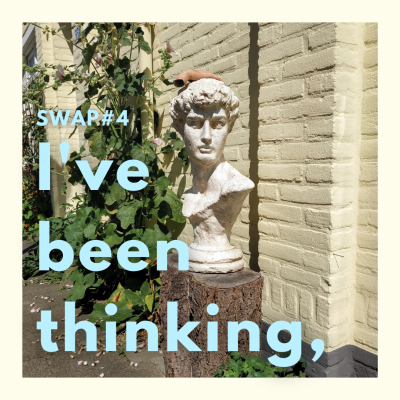
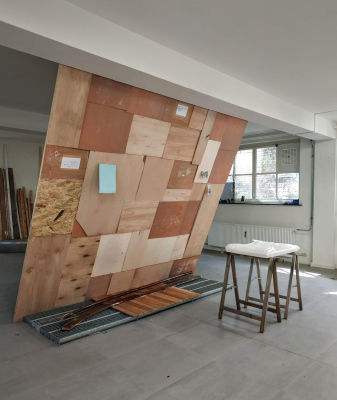
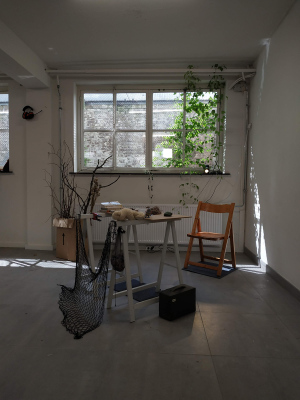

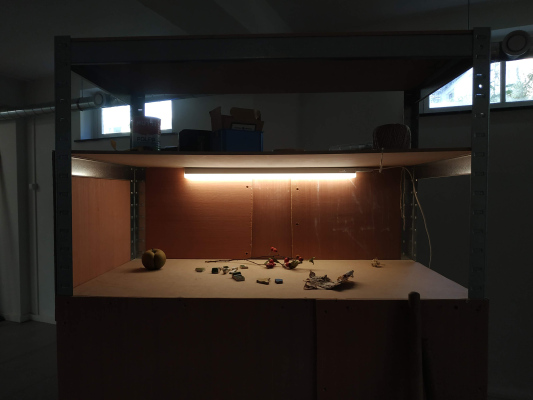
SWAP(s) noun#4: I've been thinking,
Emily Hutchings, Nele Plessers, Lizzie Veldkamp, Jules Coumans
28.08–02.10 2022
.
.
I've been thinking, werd door de kunstenaars opgevat als een werkperiode waarin er een voortdurend veranderende presentatie is te zien:
"The exhibition space as a studio, a place of residency; what and how it will proceed is still unclear. Even the immediate residents of the Mariabastion district might become part of the exhibition, if they feel drawn to the invite to participate. Or will they only visit, as if they were a tourist in their own street? Either way, the idea of a trading-based souvenir shop creates a possibility for involvement of visitors, for something that keeps developing onwards."
-
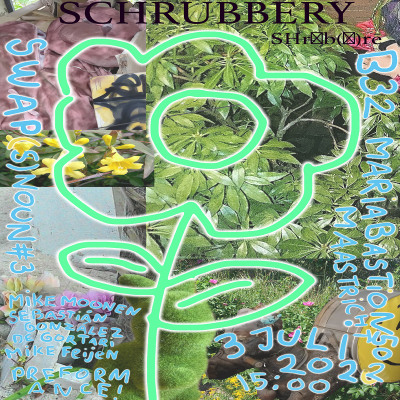
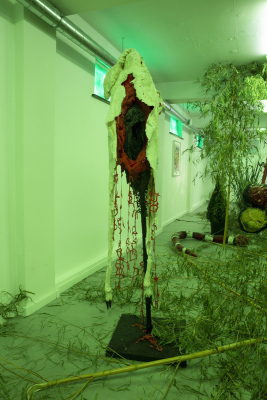
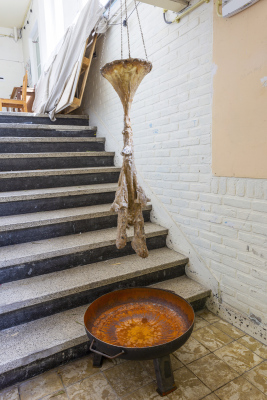
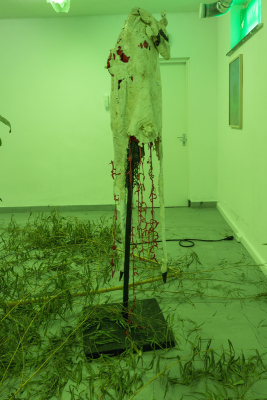
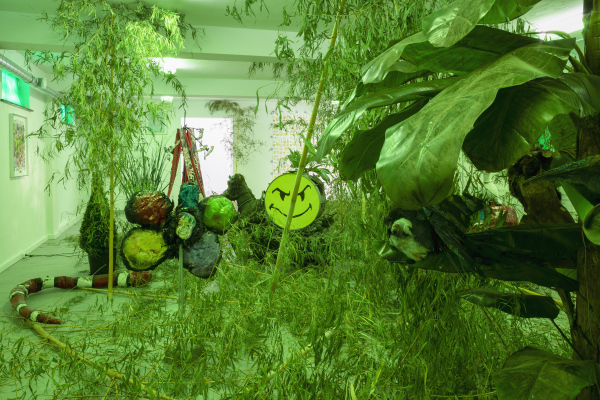
SWAP(s) noun#3: SCHRUBBERY
Mike Feijen, Mike Moonen, Sebastián González de Gortari
03.07–24.07 2022
-

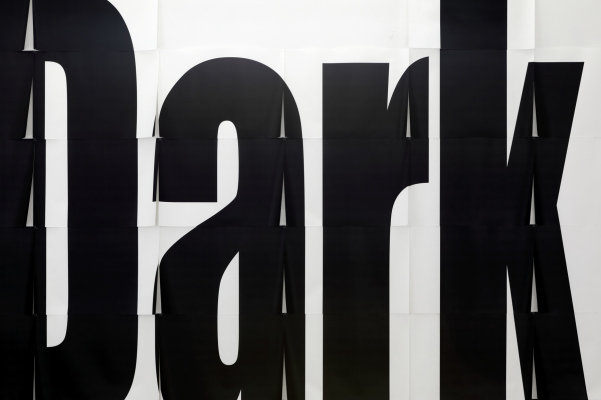
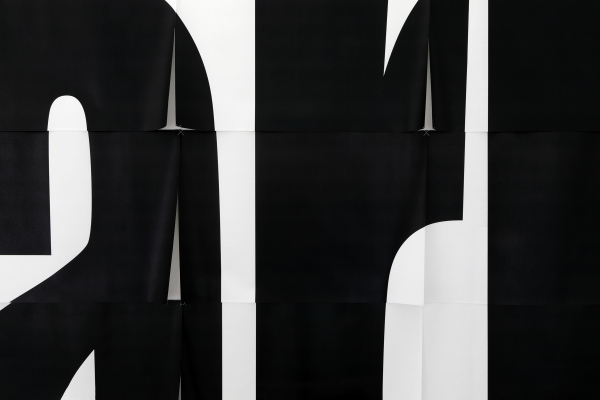


SWAP(s) noun#2: Placeholder
Simon Davies
05.06–26.06 2022
.
Placeholder is the second exhibition in the series SWAP(s) noun#. For this exhibition, Karin Peulen invited graphic designer Simon Davies.."Being a graphic designer means that I help deliver random messages from one group of people to the other. I hardly ever know who these people are, what they think or how they understand the things I have designed (especially the people on the receiving end). Every now and again, like an overzealous postman, I furtively manage to embed my own images and messages in these communications.This exhibition brings together a selection of such images and messages all of which attempt to, in some way, lay bare the unstable relationship between form, content and meaning.Placeholder is a precarious experiment the starting point of which was the question: what remains of applied art when liberated from the responsibility of application; what happens to the products of graphic design (products which pervade almost every aspect of our daily existence) when they escape the instrumentalisation of conventional commercial communication?".Simon Davies (Mexborough, United Kingdom, 1969) is a graphic designer most notably associated with the following organisations and individuals: 010 Publishers, Ronald Cornelissen, Crimson Historians and Urbanists, Wendela van Dijk, Fotomuseum Winterthur, Krijn de Koning, Jan Konings, Helga Lasschuijt, Lauran Schijvens, Jan van Toorn, VenhoevenCS Architects and Urbanists, and Camiel van Winkel. He moved to the Netherlands in 1991 and eventually set up his own design practice in 1995. Since then he has designed books, exhibitions, publicity materials, printed matter and websites for many individuals and organisations, nationally and internationally.Simon has taught part-time in art and design academies since his own graduation from the Jan van Eyck Academy in 1995 and is currently lecturer in the department of Information Design at the Design Academy Eindhoven. He was a member of the design advisory committee of the Creative Industries Fund (Stimuleringsfonds Creatieve Industie), of the Rotterdam council for art and culture (RRKC), of the selection committee of the Netherlands Foundation for Visual Arts, Design and Architecture (Fonds BKVB) and the Rotterdam Art foundation (RKS)..
-
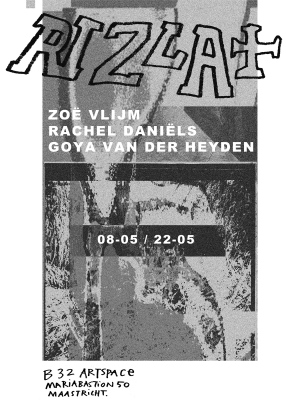
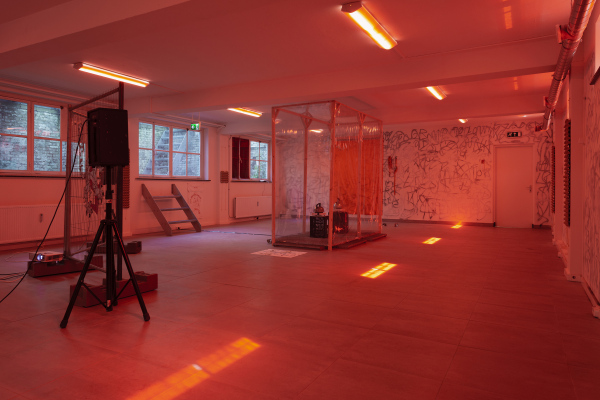
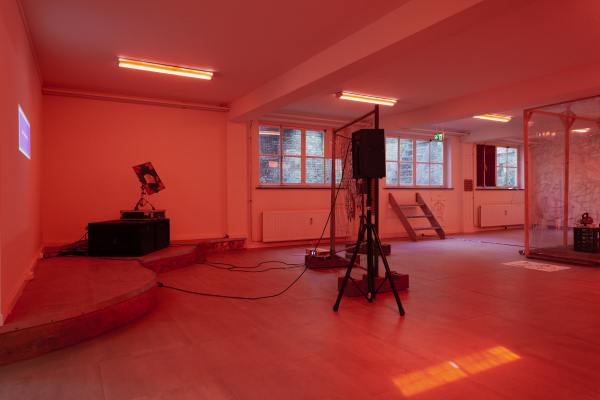
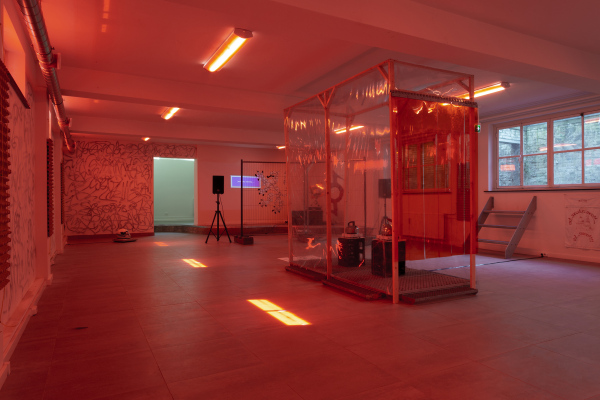
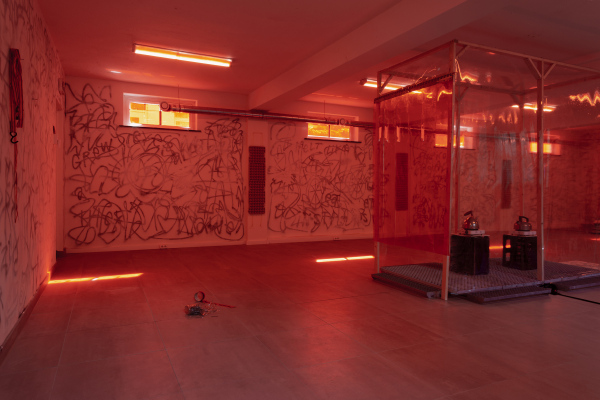
SWAP(s) noun#1: RIZLA+
Rachel Daniëls, Goya van der Heijden & Zoë Vlijm
08.05–22.05 2022
.
RIZLA+ is an exhibition resulting from a shared creation process, non-definition and open-endedness. Artists Rachel Daniëls, Goya van der Heyden and Zoë Vlijm come together in a shared interest in different aspects of underground culture, a ‘rough around the edges’ aesthetic and the use of sound in their work.
The open-endedness of the word RIZLA+, its original meaning as a tobacco rolling paper brand having left our collective memory, finds its counterpart in the open-endedness of the exhibition. The artists choose to not be too concrete and to leave things open to coincidence and interpretation, both during the process and in the final product. This approach during the collaboration has led to an exhibition in which the artists form a sum larger than their individual parts. By relying on the process and letting things happen, RIZLA+ took shape over the course of the week that they were working at B32.
Spatial interventions to the semi-sunken room of B32, that the artists endearingly call ‘the aquarium’, change the atmosphere and the experience of the room. By placing red foil on the window, the last relation to the outside world is literally being filtered out, leaving nothing to be experienced but the exhibition before us. Acoustic works sound through the room and connect the visual works. Pre-used materials from B32 are being made into installations that break up the rectangular echo chamber and change the experience in and of the room.
-


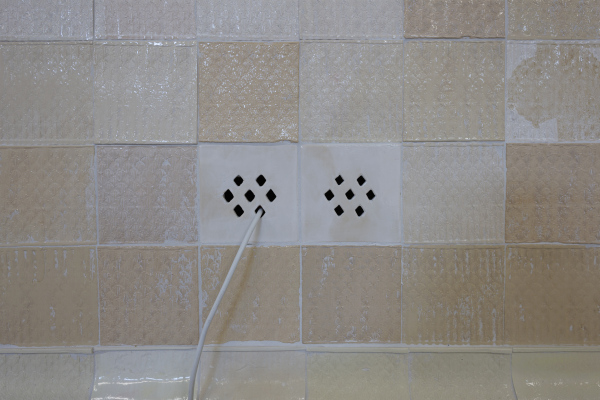

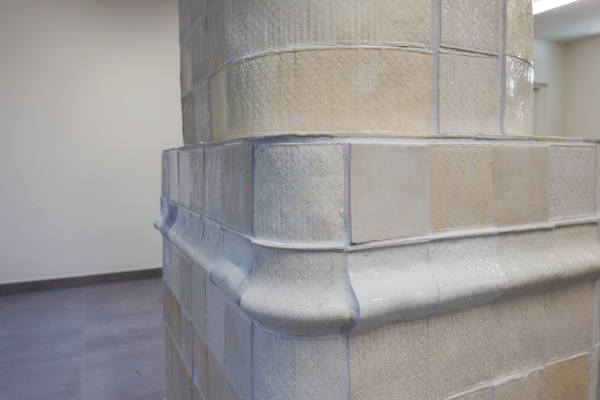
Portrait of the Host
Pieter van der Schaaf
19.03.22 – 17.04.22
.
De afgelopen twee jaar werkte Pieter van der Schaaf aan een serie sculpturen in keramiek, waarbij vooral de anti-bacteriële kwaliteiten van dit materiaal hem interesseerde. De tentoonstellingsruimte van B32 is binnen deze presentatie de host voor een serie sculpturen, die als organen met elkaar zijn verbonden via het verwarmingssysteem – dat voeding geeft als een soort navelstreng.
Pieter van der Schaaf (1984, Joure NL) woont en werkt in Parijs. In 2016/2017 was hij als deelnemer verbonden aan de Jan Van Eyck Academie in Maastricht.
B32 Artspace ©
Built with Berta.me
